Rethinking “Radicalization”: Dutch Researcher Discusses What Makes a Homegrown Terrorist, Investigative Project on Terrorism, Abigail R. Esman, December 26, 2017
(Terrorism is obviously bad and we need to do our best to prevent it. However, my principal concern is about political Islam, aka Islamism. Islamists often do not need to engage in terrorism; they can rely instead on whatever democratic processes are available to Islamise nations. Look at Canada, for example. “Islamophobia” laws restrict free speech about Islam and its anti-democracy, pro-theocracy tendencies. In America, CAIR fights “Islamophobia” as well as organizations which want Muslims to respect American law. Here’s video on America and Sharia law.
(– DM)

On Nov. 2, 2004, Dutch filmmaker and writer Theo van Gogh left his home and set off to work, riding his bicycle as he did most days through the quiet streets of Amsterdam.
Minutes later, 26-year-old Mohammed Bouyeri, a Dutch-Moroccan Muslim angered by van Gogh’s writings and films about radical Islam, fired eight shots at the filmmaker. As Van Gogh stumbled, Bouyeri shot again, then stabbed him with a butcher knife, piercing straight through his chest. Then he sliced across Theo van Gogh’s throat in a failed effort to decapitate him before stabbing him one final time. It was, as many later said, the country’s 9/11, the arrival of Islamist terrorism to the tranquil tulip fields and calm canals of the Netherlands.
Mohammed Bouyeri acted alone, but he was a leading member of what later became known as the Hofstadgroep (Hofstad Group), a loosely-knit circle of Dutch Muslim youth from Amsterdam and The Hague with extremist ideas and half-hatched plans to execute terrorist attacks around the country. In the days following Van Gogh’s death, police raided a home in The Hague, arresting seven Hofstadgroep members after a standoff lasting several hours.
Their trials, and the trials of other members, have shaped much of the Dutch understanding of Islamist terrorism both for citizens and law enforcement. Above all, the cases showed definitively that European Muslims could be radicalized, and that even Muslims raised in the West had become a threat.
In fact, as Bart Schuurman, a research Fellow at the International Centre for Counterterrorism in The Hague, argues in his upcoming book, Becoming A European Homegrown Terrorist, the Hofstadgroep case ultimately came to define homegrown jihadism in Europe. Thanks, too, to the work of Dutch journalists Janny Groen and Annieke Kranenberg, studies into the women in and around the Hofstadgroep have provided important insights into the radicalization of Muslim women in the West, and their role in homegrown jihad.
For his research, Schuurman spoke with Hofstadgroep members and studied the police interviews with the Hofstadgroep to better understand their actions and thought processes.
On the eve of the publication of his new book, Schuurman talked to the Investigative Project on Terrorism (IPT) about his findings, what they say about the making of a homegrown terrorist, and how his research can help bring new insights to the fight against Islamist terror.
Abigail R. Esman: The Hofstadgroep was limited to the Netherlands, and the group preceded (by over a decade) the rise of ISIS and even social media. How is knowledge about that group still useful for a more global and more contemporary analysis of home-grown terrorism?
Bart Schuurman: The Hofstadgroep is indeed an older case as it was active between 2002 and 2005. As such, it was part of what could be called the first wave of European homegrown jihadism. I argue that insights we can derive from how and why people became involved in the Hofstadgroep are still relevant now for several reasons. First of all, like the current foreign fighter phenomenon, the Hofstadgroep’s extremist inner-circle also initially tried to join jihadist insurgencies overseas. Only when this failed, did some of them begin to consider and plan terrorist attacks in the Netherlands. Secondly, the Hofstadgroep was not a phenomenon unique to the Netherlands, but one example of the broader phenomenon of European homegrown jihadism that is still with us today. While much has changed in terms of context, such as a shift in focus from Afghanistan to Syria, many of the underlying dynamics driving involvement in this type of terrorism remain unaltered. I think that the field of terrorism studies sometimes has the unwarranted tendency to see every development in the terrorist threat as heralding a fundamentally ‘new’ situation to which our previous explanations and theories are of little to no utility. I’d argue it’s exactly the opposite; especially because it’s relatively easier to access high-quality data on older cases, they are a great resource for informing the ongoing debate on what can motivate (and prevent!) people from becoming involved in terrorism.
ARE: Are there any other groups like the Hofstadgroep today, either in the Netherlands or elsewhere?
BS: In ideological terms, the Hofstadgroep could be broadly characterized as driven by an extremist Salafi-Jihadist worldview and focused on waging a ‘defensive’ jihad against what they saw as Western geopolitical aggression and the threat posed by heresy and apostasy. I think it’s safe to say that such views have continued to be embraced by Islamist extremists in the Netherlands and Europe more broadly, although it is difficult to assess the scale on which this has occurred. But it is crucial to distinguish between holding radical or extremist views and becoming involved in any capacity in terrorist violence. The vast majority of radicals never cross this threshold. What I think we see today in Europe is that relatively small numbers of (would-be) jihadist terrorists continue to pose a serious threat and that they are embedded in a broader ‘radical milieu’ from which they draw support. While this threat is a very real one, I think it is important to keep in mind that these individuals and groups are not representative of the Muslim community as a whole. A key observation that we sometimes miss, is that Muslims are in fact the number one victims of groups like [ISIS] and al-Qaeda when we look at the violence in countries like Syria and Iraq.
ARE: What did you learn about the personalities of those likely to join such groups, or to act as lone wolves? (Is there also a similarity between those who join groups and lone wolf attackers?)
BS: Most researchers would agree that there is no such thing as a terrorist profile, at least not one of any practical utility. Most terrorists are relatively young and most are male; beyond that considerably diversity has been observed in terms of socioeconomic background, family obligations etcetera. None of which means that personality factors cannot play a role at all. In fact, things like past involvement in violence or previous socialization to extremist beliefs can be important parts of the explanation for why someone became involved in terrorism. Perhaps the most important thing that I took away from my Hofstadgroep study in terms of the influence of personality factors, is that extremism and terrorism cannot simply be explained as stemming from psychopathology or deprivation. On the whole, group-based terrorists are not driven (primarily) by mental health problems or lack of opportunities to pursue alternative career paths in society. The uncomfortable truth is that, for many of these individuals, involvement in terrorism is a more or less conscious decision. An interesting finding about lone actors is that many of them did not ‘go it alone’ for tactical considerations, but because they failed to join or form a terrorist cell of their own. This may tie into the higher prevalence of mental health problems among lone actor extremists, which can make them appear untrustworthy or simply disagreeable and therefore prevent them from being truly accepted by other extremists.
ARE: Is there a difference between those who join local groups and the lone wolf types who are influenced by ISIS and Al Qaeda? That is to say, do they see the larger terror groups in the same way Hofstadgroep members saw their own group?
BS: Again, while some lone actors (Unabomber, Breivik) make a conscious decision to operate alone, many would have liked to join others but failed to do so. But both lone actors and participants in groups like Hofstad are generally heavily-influenced by the larger radical milieu of which they are a part; taking inspiration from videos, writings, speeches etc. of leading figures and groups.
ARE: You distinguish between radicalization and fanaticism in your work. Can you explain what these are?
BS: I have been critical of the concept of radicalization for a long time. Although it has become a household term since 2004, it doesn’t really explain how and why people become involved in extremism and terrorism. Radicalization suffers from lack of a clear definition and it is inherently subjective. A century ago, those in favor of extending voting rights to women were often labeled radicals by their opponents. Few would (hopefully!) dare make that same argument now. Not only do our views of what is ‘radical’ change over time, but by associating radicalization so closely with terrorism, we have lumped together activists who, although we may disagree with them, are essentially advocating change while remaining within the limits of the liberal democratic order, with individuals and groups committed to the use of extreme violence to get what they want. If that isn’t problematic enough, most interpretations of radicalization continue to overstate the degree to which beliefs influence behavior. Saying someone was ‘radicalized’ prior to committing a terrorist act doesn’t really help us understand that act; there are millions of people with radical or extremist views and the vast majority of them never become involved in terrorism in any way, shape or form. So while extremist beliefs are usually an important component of the overall picture of why people commit terrorism, they are insufficient by themselves to function as an explanation. For that reason, I think we should stop talking about radicalization and instead study the pathways to lead to involvement in terrorism, as this implicitly draws attention to the multitude of factors that constitute such processes. Fanaticism struck me as a more useful concept because, as it was developed by British psychologist Max Taylor, it recognizes that not all ‘fanatics’ will act on their beliefs but stipulates conditions under which they are more likely to do so. “Fanaticism” is thus able to overcome, at least to some degree, “radicalization’s” greatest shortcoming; namely, why the vast majority of radicals never become terrorists.
ARE: Why are fanatics more likely to become violent?
BS: It is more a question of when, rather than why. Fanaticism (or radicalism, if you will) is more likely to actually lead to violence when 1) the beliefs adhered to are distinctly militant; 2) when the fanatic/radical also holds to millenarian views, such as that the apocalypse is nigh and can be hastened by the individual believer; and 3) (to me most importantly) when the radical/fanatic is not exposed to contrarian views that can challenge his/her extremist convictions or inject some grey into a black/white world-view.
ARE: You also indicate that the Hofstadgroep members were less concerned with creating change than with making a statement about their own Islamic identity. In a way, it seems you are saying it was more about themselves than about the world. That’s an interesting perspective for me, because it parallels my own ideas about terrorists being narcissists, and I wonder if this isn’t in fact true of other terrorists and terror groups – not just Islamist. Is this a view or an approach to terrorism we have overlooked? Maybe we’ve been missing the real picture. Or is it some of both?
BS: I am always a bit careful using terms like narcissism because people can then be quick to pathologize such statements. But there is definitely something interesting going on in terms of identity. A key question for me is always; why would anyone join a terrorist group? The most likely outcomes are death or a life in prison. Now, while jihadists (at least profess to) want to die for their beliefs, terrorism has a much longer and broader history than Islamist extremism alone. There have been many secular terrorist groups who were not keen to go to an afterlife. So, what does terrorism offer that can make some people takes these risks? A large part of the answer lies, I believe, in the attractions of group membership. Things like status within a particular community, the notion of being part of something grandiose and important, the feeling of living an important and exciting life, the comradeship formed under fire, these are key factors binding people to terrorist groups, whether we’re talking about [ISIS], the IRA or the Italian Red Brigades. I think it would be great to delve more deeply into such factors in future research.
ARE: Finally: How can your research help counterterrorism analysts and law enforcement going forward?
BS: I hope that my work will be able make a contribution to the work of counterterrorism policymakers and practitioners in two ways. First of all, by providing a unique primary-sources based account of how and why involvement in a key example of European homegrown jihadist group occurred, I hope to contribute to their subject-matter expertise. More importantly, I hope that my findings will challenge counterterrorism professionals to keep critically re-examining the assumptions about such processes that they use to guide their own work.

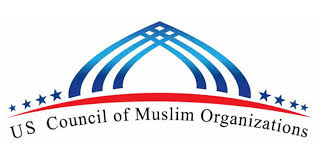


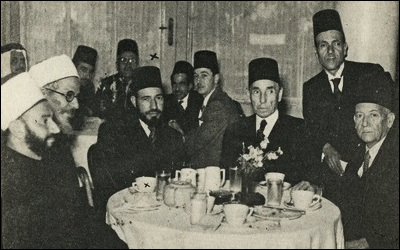






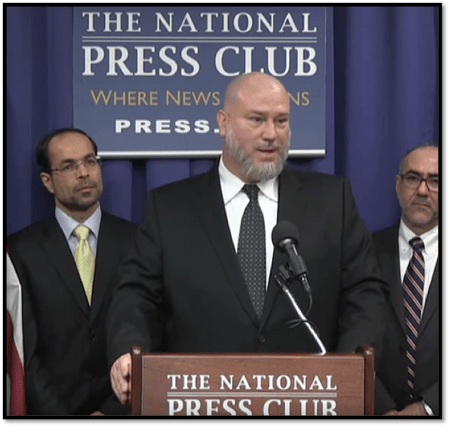




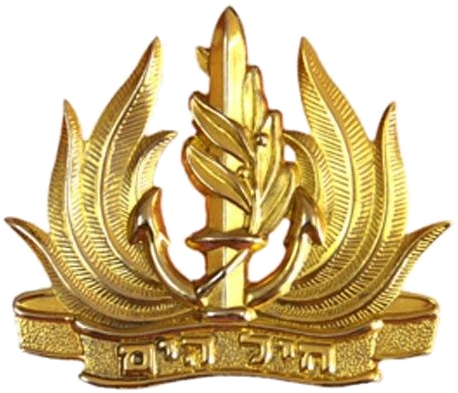
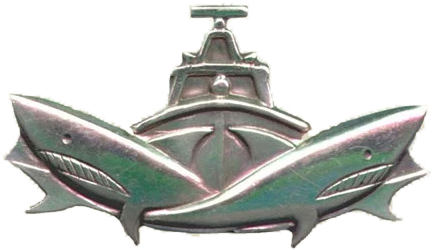
Recent Comments